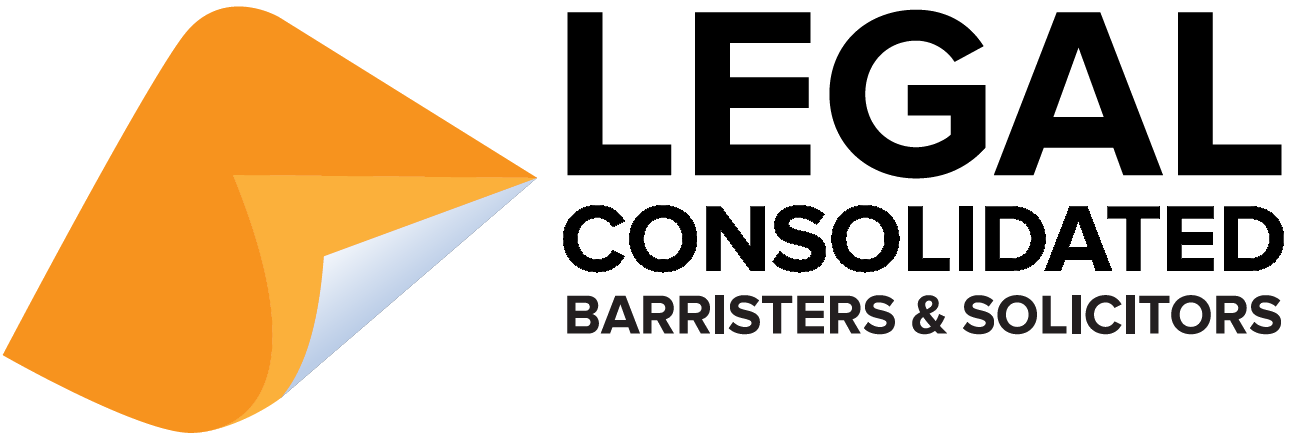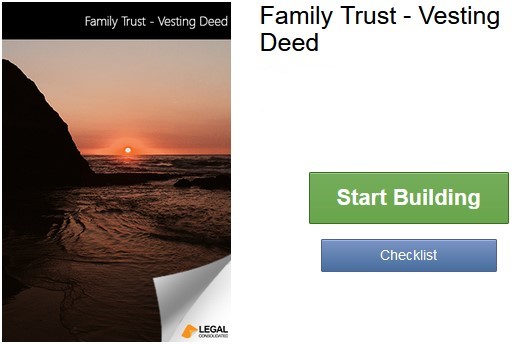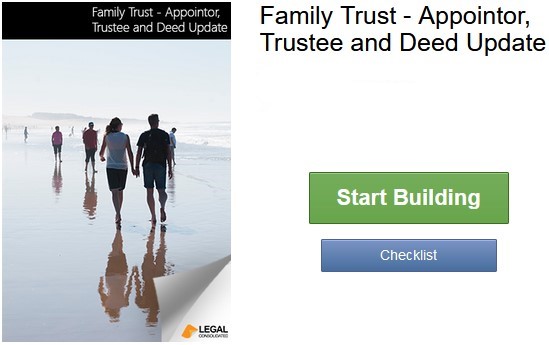A rather worrying trend is Centrelink attacking people who are unaware that they are mentioned in a Family Trust. For example, the high risk of bankruptcy son often makes Mum the Appointor or a Default beneficiary – for asset protection. Mum has never seen a cent of the Family Trust’s assets. But the ATO is happy to let Centrelink know of the ‘crime’ of non-disclosure by Mum. No ‘pattern of distribution’ from the Family Trust but Mum is caught nonetheless. (Legal Consolidated Family Trust Deeds are unique in that a high-risk asset protection person is able to also hold the position of Appointor.)
Family trusts are flexible. Many family trusts have over 400,000 beneficiaries. Centrelink’s specific assessment rules do not cope with the flexible nature of family trusts. They are far too broad-reaching. If you had any involvement with a trust as an appointor, trustee or beneficiary, you are often assessed as ‘owning’ the trust assets. Plus you may be deemed to earn the Family Trust income. This is even if the Family Trust distributes its income to another beneficiary. This is under the attribution rules. (We have even seen situations of the mere name of the Family Trust upsetting Centrelink. The accountant had to change the name of the Family Trust!)
Sadly, little old grandmas, destined to get none of the assets from their children’s and grandchildren’s family trusts are still caught. Centrelink is harsh and unsympathetic.
We had one disabled nephew (who did not even know he was a potential beneficiary) attacked by the heavy-handed Centrelink.
Sadly, even family trusts with no assets in them may attract Centrelink’s hostility. The accountant merely closed down the Family Trust and Centrelink went away.
Well before the end of the financial year speak to your accountant and financial planner:
- remove the Pensioner Beneficiary from the Family Trust
- remove trustees and appointors
- wind up and get rid of the old Family Trust
- wind up and vest the old Unit Trusts
- change the name of the Family Trust
- pensioner forgives debts that the Family Trust owes to the pensioner
- pensioner ‘gifts‘ assets to the Family Trust (instead of loaning money to a Family Trust)
Changing Beneficiaries in a Family Trust
Centrelink is often content if the Family Trust builds a Remove a Beneficiary from a Family Trust deed.
Protection Young and Old Person Toolkit
These free resources help protect the vulnerable, the young and the old:
- Vulnerable people in Wills – watch the training course
- Loans to children – in case they divorce or go bankrupt
- Loans to grandparents
- Divorce Protection Trusts in Wills – in case a beneficiary, child or grandchild separates
- Making Wills for Grandparents
- Special Disability Trusts – for disabled grandparents (not means tested for Centrelink)
- Elder Abuse – protecting the parents as well
- Life Estates do NOT protect grandparents
- Pensioner renounces a gift or Family Trust distribution for Centrelink
- Grandparents paying 32% on your super when you die
- Only disabled people can take your SMSF Reversionary Pension
- Parent dies child pays 66% tax
- Dad’s Will: child vs charity
- Son loses farm to his two daughters
- Disabled dad has $9m, two children and no Will
- Court rewrites disabled Dad’s Will to protect family
Resettlement triggers stamp duty and Capital Gains Tax
The risk of a variation of trust or change in beneficiaries triggering resettlement is reduced thanks to the Commissioner of Taxation v Clark and the subsequent release of Taxation Determination TD 2012/21.
The High Court decision in FCT v Commercial Nominees of Australia Ltd 21 should have clarified the position but it concerned changes to the trust deed for a superannuation fund and the Commissioner of Taxation initially refused to accept that the principles outlined in Commercial Nominees applied to other trusts such as a Family Trust. The ATO was naughty to do this.
In Commercial Nominees the High Court:
- acknowledged there were differences between a normal trust fund and a superannuation fund
- but pointed out that the fundamental question was one of ‘continuity’ (i.e. did the original fund continue in existence despite the changes)
- considered that, notwithstanding the quite dramatic changes that were made to the trust deed and the structure of the superannuation fund, the original fund ‘did not come to an end’ but continued as the same entity
Trust deed amendments – life after Clark’s case 6 of 15
The ATO issued revised a ‘Statement of Principles’, in 2001 (following the decision in Commercial Nominees) which outlined the circumstances in which the ATO would treat changes to an existing trust as triggering resettlement. This Statement of Principles refused to accept that the principles in Commercial Nominees would apply to general trusts and indicated that some relatively minor changes might trigger a resettlement in some circumstances (e.g. an amendment to the definition of trust
income in some cases).
In Clark, the Federal Court (both at first instance and on appeal) indicated that the principles set out in Commercial Nominees are not confined to superannuation funds and are equally applicable to other trusts.
Importantly, all members of the Full Court followed the approach of the High Court in Commercial Nominees.
Dowsett J cited the following passage from the High Court decision in Commercial Nominees as summarising the correct approach in determining whether there is a resettlement:
‘The three main indicia of continuity for the purposes of Pt IX are the constitution of the trusts under which the fund (if a trust fund) operated, the trust property, and membership. Changes in one or more of those matters must be such as to terminate the existence of the eligible entity, or to produce the result that it does not derive the income in question, to destroy the necessary continuity.’
Edmonds and Gordon JJ cited the same passage.
Legal Consolidated does not give advice on taxation, stamp duty and re-settlement issues. This information is general only. Speak to your accountant, adviser and lawyer.
Why is the Australian government interested in intergenerational wealth transfers?
The Australian Department of Human Services monitors intergenerational wealth transfers. This is because it administers the age pension based on income and assets. To get a full or part age pension in Australia (and a range of other social security benefits) from Centrelink, you generally must pass both income and assets tests. This is called ‘means testing’.
If your income and asset levels fall within specific thresholds you may pass these tests.
Resources to empower you to comply with Centrelink
Free Centrelink tool kit:
- Estate Planning:
- 3-Generation Testamentary Trust Wills – beneficiaries retain Centrelink benefits in your Will
- Is it legal to prepare Wills for your Grandparents?
- Centrelink compliant Power of Attorney – keeps your family in control, not Centrelink
- Elder abuse using a POA
- Abandon a gift in a Will to keep the pension?
- Loans to parents – escape ‘means testing’ by Centrelink
- Special Disability Trust – in your spouse’s Will to avoid Centrelink deprivation rules
- Contractual Will Agreement when your Grandmother remarries
- Grandparent forgives loans to children and grandchildren
- Family Trusts:
- Replacing the Appointor in a Family Trust – succession planning for a person wanting Centrelink
- Company to replace pensioner as trustee of a Family Trust
- Wind up and get rid of the Family Trust – Centrelink compliant
- Can beneficiaries disclaim a Family Trust distribution?
- Self-Managed Super Fund:
- Removing a pensioner as a member of an SMSF
- Keep super in the fund when your spouse dies – escape means testing
- Get rid of unused Self-Managed Super Funds Deeds
- Wind-up Unit Trusts
- What to do before the end of year financial year – to appease Centrelink
Q: What are Centrelink’s main tests for Pensioners in Family Trusts?
Understanding how private trusts are treated for social security involves two main tests: the control test and the source test:
- The control test examines who has control, whether formal or informal, over the trust. It’s about identifying the decision-makers within the trust.
- The source test, on the other hand, looks at the person responsible for originally contributing assets to the trust. It’s about tracing the origins of trust assets. These tests are important because they influence how income and assets are attributed when assessing social security in relation to private trusts.
Q: How is the income calculated in a Family Trust for Centrelink?
If a Family Trust is caught under the social security rules, the assets and income of the trust are included in calculating the pensioner’s entitlement. The inclusion of assets and income is called attribution. The amount of the trust’s income and assets attributed is expressed as a percentage known as the attribution percentage.
Q: What if I have no ‘formal’ control of the Family Trust?
The pensioner may still fail the control test even though they do not hold an official role in the family trust. This is because the control test captures a broad range of associates (in addition to the individual) and considers both formal and informal control.
For instance, when an associate serves as a trustee for the family trust, and it’s evident that their decisions are reasonably influenced by a beneficiary who acts in their favour or follows their directives, the control test can be extended to that beneficiary. Consequently, a social security recipient might have trust assets and income attributed to them, even if they only hold a beneficiary role within the trust. To make it more complex, control may be exerted by multiple individuals.
Centrelink’s control test is comprehensive and encompasses various forms of control. Centrelink provides only general guidelines. The assessment of an individual family trust’s circumstances is carried out by Centrelink’s complex assessment team.
Q: Give an example of informal control that Legal Consolidated has seen?
In a scenario involving discretionary family trusts and informal control, consider Sarah and John, who are both receiving the Age Pension and are beneficiaries of their family trust. Their daughter, Emily, holds the roles of Appointor and Trustee within this family trust, which also includes Sarah, John, and their three children as beneficiaries.
Before making any distributions to Sarah and John, Emily consults with her parents to determine the amount of distributions they would like to receive. Sarah and John actively collaborate with Emily to ensure that the distributions have a minimal impact on their Age Pension entitlement. This strategy may involve larger distributions to other beneficiaries. Despite Emily’s formal control as trustee, her regular collaboration with her parents indicates an informal control dynamic.
In such a scenario, Sarah and John have informal control over the family trust. Consequently, the assets and income of the family trust are factored into the means testing for the couple. They lose their Age Pension entitlement. Centrelink uses divorce, bankruptcy and other methods to force one of the family to expose the discussion with the parents.
Q: What is an ‘attributable stakeholder’ for Centrelink?
A family trust structure is assessed by Centrelink’s complex assessment team. The full circumstances are considered to determine whether and to what extent the income and assets of a family trust are attributed to an individual (referred to as an attributable stakeholder).
If a family trust is classified as a controlled private trust for the pensioner, that individual is then regarded as an ‘attributable stakeholder’. Once the family trust is examined, and specific individuals are recognised as attributable stakeholders, Centrelink’s complex assessment team establishes the ‘attribution percentage’. For social security, attributing a portion of an asset or income to an individual means that these amounts are considered as the individual’s own. This is for the purpose of means testing. The amounts are used to calculate the individual’s reduction of Centrelink benefits.
Q: Why are bonds in Family Trusts disregarded for the Income Test and Attribution?
That is not quite correct. However, it is correct to say that the type of investments within the family trust dictates the amount of assessable income from the trust. For example, investments in non-income-producing assets, such as investment bonds, do not generate assessable income. This is provided no withdrawals are made within the 10 years. This is a standard concession under the income test. Yes, it does lower the assessable income of the trust from a tax perspective. This then ‘flows’ through for social security purposes for the attributable stakeholder. If an insurance bond is held personally, it is a financial investment and deemed.
Such incredible opportunities come from your accountant and financial planner. Talk to them about this.
Building Legal Consolidated documents
We are an Australian law firm. Be careful of websites that ‘look like’ law firms but merely re-sell a law firm’s template.
I am an Adjunct Professor lecturing both the Estate Planning and Superannuation units at a number of universities. I have done so since 1999.
I have 7 degrees, 4 of which are in law including my doctorate. My research was on Estate Planning and succession planning. Estate Planning is my passion, especially given the opportunity to reduce the four defacto death duties: income tax, Capital Gains Tax, transfer duty and the 32% death tax on your superannuation.
I author both of Australia’s leading Estate Planning books: CCH Australian Estate Planning and Thompson Reuters Australian Financial Planning Handbook.
You can build your Estate Planning documents online:
Start building the Estate Planning documents, read the hints, watch the training videos. If you need a hand answering any of the questions please ring me or any of my lawyers.
The 3-Generation Testamentary Trusts include:
- 3-Generation Testamentary Trust Will – reduces CGT, income tax & stamp duty
- Superannuation Testamentary Trust – reduces the 17% or 32% tax on Super going to adult children
- Bankruptcy Trusts – if a beneficiary is bankrupt
- Divorce Protection Trust – if a child separates, stops the Family Court from getting your money
- Maintenance Trust – where beneficiaries under 18 years of age or unstable
The Estate Planning bundle includes 1. 3-Generation Testamentary Trust Wills 2. Power of Attorneys and 3. Medical POAs.
ADDITIONAL ESTATE PLANNING DOCUMENTS:
After you have built the bundle, you may also wish to consider:
1. Contractual Wills Agreements – for 2nd marriages
Plus when you have a Family Trust:
2. Family Trust Update with succession planning
3. Deed of Debt Forgiveness to get rid of money the Family Trust owes the children
Plus when you have a Self-Managed Superannuation Fund
4. Update SMSF Deed or Update the Binding Death Benefit Nomination
There are two training courses (which are currently free) you can complete online:
Again, if you need a hand answering any of the online questions, just telephone the law firm.




